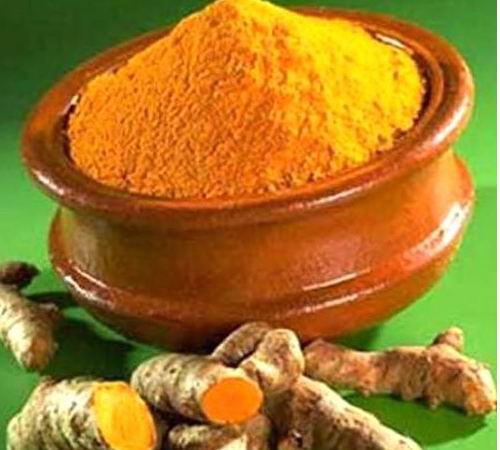According to a report in the journal Stem Cell Research and Therapy, a spice commonly found in curries may boost the brain’s ability to heal itself.
The German study suggests a compound found in turmeric could encourage the growth of nerve cells thought to be part of the brain’s repair kit.
Scientists say this work, based in rats, may pave the way for future drugs for strokes and Alzheimer’s disease.
However, researchers say more trials are needed to see whether this applies to humans.
Researchers from the Institute of Neuroscience and Medicine in Julich, Germany, studied the effects of aromatic-turmerone – a compound found naturally in turmeric.
Rats were injected with the compound and their brains were then scanned.
Particular parts of the brain, known to be involved in nerve cell growth, were seen to be more active after the aromatic-turmerone infusion.
Scientists say the compound may encourage a proliferation of brain cells.

Turmerone, a spice commonly found in curries, may boost the brain’s ability to heal itself
In a separate part of the trial, researchers bathed rodent neural stem cells (NSCs) in different concentrations of aromatic-tumerone extract.
NSCs have the ability to transform into any type of brain cell and scientists suggest they could have a role in repair after damage or disease.
Dr. Maria Adele Rueger, who was part of the research team, said: “In humans and higher developed animals their abilities do not seem to be sufficient to repair the brain but in fish and smaller animals they seem to work well.”
The research found the higher the concentration of aromatic-turmerone, the greater the growth of the NSCs.
And the cells bathed in the turmeric compound seemed to specialize into certain types of brain cells more rapidly too.
Dr. Maria Adele Rueger added: “It is interesting that it might be possible to boost the effectiveness of the stem cells with aromatic-turmerone.
“And it is possible this in turn can help boost repair in the brain.”
She is now considering whether human trials may be feasible.
Aromatic-turmerone is the lesser-studied of two major compounds in turmeric that may have an effect on the human body.
Previous studies suggest the other compound, curcumin, could reduce inflammation in the body and have anti-cancer benefits.
Kate Middleton has been reportedly craving sugary sweets and hot vegetable curries made at the shop in her family’s village.
She first stumbled upon the tasty dinners when she went into Peach’s Spar, in Bucklebury, Berkshire, to buy bags of Haribo sweets – another firm favorite.

Kate Middleton has been craving sugary sweets and hot vegetable curries
The Duchess of Cambridge then clocked what was cooking in the upstairs kitchen. Chan Shingadia, who runs the convenience store with wife Hash, said: “My wife was cooking. Kate said it smelled lovely.”
Hash Shingadia added: “She said she had a craving so I made her a big batch to take away with rice and flatbreads.”
The Gujarati curry proved such a hit Kate Middleton has been a regular visitor.
“She last popped in a couple of weeks ago,” said Hash Shingadia.
Curcumin, a chemical found in curry, is to be tested for its ability to kill bowel cancer tumors in patients.
Curcumin, which is found in the spice turmeric, has been linked to a range of health benefits.
Studies have already shown that curcumin can beat cancer cells grown in a laboratory and benefits have been suggested in stroke and dementia patients as well.
Now a trial at hospitals in Leicester will investigating giving curcumin alongside chemotherapy drugs.
If the disease spreads around the body, patients are normally given a combination of three chemotherapy drugs, but about half will not respond.

Curcumin, a chemical found in curry, is to be tested for its ability to kill bowel cancer tumors in patients
Forty patients at Leicester Royal Infirmary and Leicester General Hospital will take part in the trial, which will compare the effects of giving curcumin pills seven days before starting standard chemotherapy treatment.
Prof. William Steward, who is leading the study, said animal tests combining the two were “100 times better” than either on their own and that had been the “major justification for cracking on” with the trial.
He said: “Once bowel cancer has spread it is very difficult to treat, partly because the side effects of chemotherapy can limit how long patients can have treatment.
“The prospect that curcumin might increase the sensitivity of cancer cells to chemotherapy is exciting because it could mean giving lower doses, so patients have fewer side effects and can keep having treatment for longer.
“This research is at a very early stage, but investigating the potential of plant chemicals to treat cancer is an intriguing area that we hope could provide clues to developing new drugs in the future.”
Advances in nutritional research are beginning to shine a light on the potentially slimming effects of some of the most sinful foods, such as chocolate, cheese or a big glass of wine.
Red wine
Scientists in the U.S. have identified a compound in red wine that could help you slim. Called piceatannol, it appears to slow the growth of fat cells, which means that rather than topping up your calorie total, red wine could be a dieter’s friend. Piceatannol appears to alter the way new fat cells grow.
Normally, it takes ten days for a fat cell to reach maturity, and once it has, it is difficult to shrink with diet and exercise. However, when there’s piceatannol in the blood, fat cells are stopped from maturing. Scientists believe that if they isolate the compound, they may be able to use it in anti-obesity drugs.
You may be able to reap the fat busting benefits by having one glass of red wine a day. Any more, however, and you could be adding too much to your daily calorie load – half a bottle of wine is around 250 calories, but at 510 calories, a bottle a day is not only highly calorific, but also damaging to health.
Curry
Living off spicy takeaways – including curries – has always been thought of as a surefire route to weight gain, but researchers at Canada’s Laval University have found that a chemical contained in chillies could boost your body’s ability to burn fat and curb your appetite. This is because capsaicin, the chemical that gives chillies, cayenne and paprika their characteristic pungency, stimulates the natural process where some of the food we eat is converted immediately to heat. Called diet-induced thermogenesis, this process is good news for dieters because it means we burn up calories rather than storing them.
Scientists found that chilli can also reduce your appetite. Studies show that when men and women eat chilli-spiked food, they feel less hungry and eat significantly less at subsequent meals. Incorporating chillies into your breakfast has been shown to be effective at encouraging you to opt for a smaller lunch. But if you can’t face the thought of a spiced-up egg-white omelette (51 calories for three eggs), you can get your chilli fix at the end of the day with a hot curry, ideally tandoori, tikka or bhuna as they tend to be made without creamy sauces.

Advances in nutritional research are beginning to shine a light on the potentially slimming effects of some of the most sinful foods
Nuts
There’s no doubt that nuts are fattening. Or are they? As a snack, nuts pack a heavier calorie punch than crisps (a handful of crisps is around 40 calories, whereas you can easily notch up 300 calories with a fist-full of peanuts). But nutritional experts believe they could be a better choice for dieters. Research shows that people who snack on nuts tend to be slimmer than those who don’t.
A study from Purdue University, Indiana, found that when a group of 15 normal-weight people added about 500 calories’ worth of peanuts to their diet, they consumed less at subsequent meals. The participants also revved up their resting metabolism by 11%, which means they burned more calories – even when relaxing. Researchers from the University of Barcelona say this is because nuts stimulate the hormone serotonin, which boosts happiness, decreases appetite and improves heart health. It takes only 1oz of raw, unpeeled walnuts, almonds and hazelnuts a day to start reducing fat around your abdomen.
Coconut oil
Coconut oil has acquired a bad reputation for being high in saturated fat. But research is emerging that indicates this fat might behave differently from other saturated fats. Coconut oil is predominantly made up of short and medium-chain fatty acids. These compounds don’t boost cholesterol levels – in fact, they lower the risk of heart disease and can help weight loss because your body is able to burn them more quickly than other fats.
Use small quantities in cooking or baking instead of butter or unhealthy oils. It remains stable at high temperatures so is great for frying, too.
Cheese
For long-term dieters one of the most sorely missed foods is often cheese. With its high fat and calorie content (42 cals and 3.5g of fat per 10g slice) it’s all-too often sacrificed in favour of more slimming sandwich fillings and meal toppings. But studies now show cheese can help you lose weight – particularly around your abdomen. Cheese contains protein, which helps us feel fuller more quickly, but scientists also believe the calcium in cheese encourages the body to burn more fat because it helps your body increase the amount of fat it eliminates. The best cheeses are feta or Edam as they are lower in fat per serving, but keep away from rich creamy ones such as Camembert.
Chocolate
Even though chocolate is loaded with calories, dark chocolate contains antioxidants and ingredients such as bioflavonoids that scientists believe may promote weight loss. A study at the University of California found that chocolate-eaters tended to be slimmer than those who didn’t touch the stuff. They were also less likely to get heart disease or suffer strokes. But milk chocolate adds calories and depletes the proportion of essential slimming nutrients. So choose dark chocolate with a high percentage of cocoa (70% or more) as the crucial nutrients are contained in the cocoa. As an added bonus, its bitter taste may also suppress appetite.




